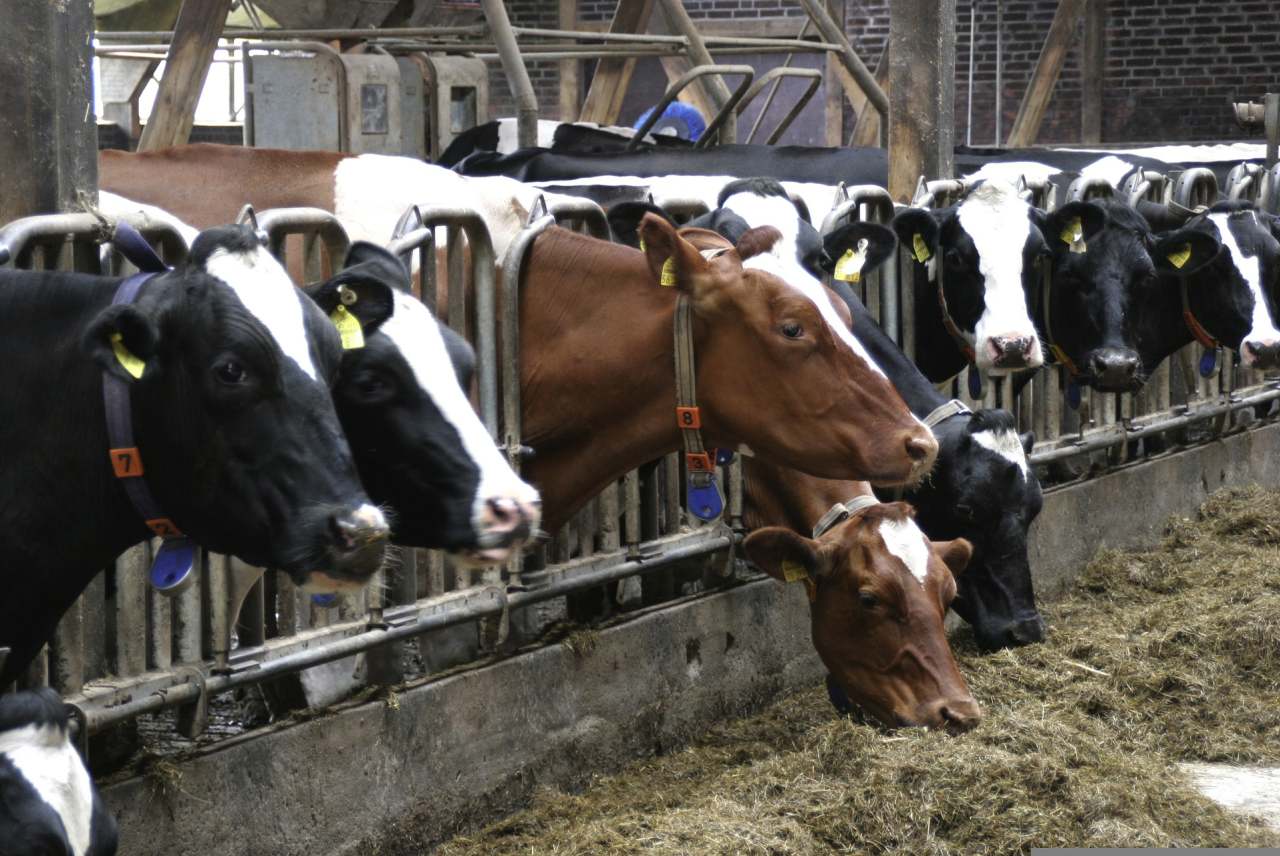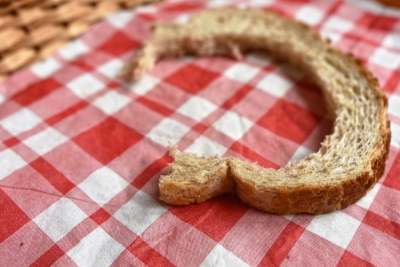We are not cutting emissions from our food fast enough to meet UK climate goals, according to Ethical Consumer’s 2022 Climate Gap Report. Emissions come from every stage of the food system – from deforestation for cattle ranching, to emissions from food waste in landfill.
But food also offers a significant opportunity. By changing the way we eat, we can significantly reduce our carbon footprint.
How does food contribute to climate change?
Greenhouse gas emissions from meat, fish and dairy
When it comes to the emissions from food, there are two main culprits: meat, fish and dairy farming, and what is known as ‘land use’.
The meat industry is responsible for almost 56% of greenhouse gas emissions from our food. Yet it provides just 37% of our protein and 18% of our calories.
There are two big sources of GHG emissions from the animals we eat. Cows and sheep burp large amounts of methane during the torturous process of digesting grass. Methane is a very powerful greenhouse gas. This means that beef and lamb really are the worst of the bunch. A kilo of beef can emit over 20 times more GHG emissions than a kilo of eggs and 200 times more than a kilo of nuts.
In 2018, scientists therefore found that to keep global warming below 2C (let alone 1.5C), the average person may eventually need to eat as much as 75% less beef and 90% less pork.
According to a 2023 report by Feedback, Desmog and the Institute for Agriculture & Trade Policy, the meat and dairy industry is using a number of tactics to greenwash their climate impact. Big Livestock's Big Greenwash report found the total combined livestock emissions of 15 of the world’s largest meat and dairy companies exceed the individual emissions of ExxonMobil, BP and Shell.
Emissions from use of land for farming
Animals also require a large amount of land, both to live on and for their feed. This demand for land can result in massive deforestation, including of the Amazon: in fact, it’s the biggest single cause of deforestation globally.
This is what we mean when we talk about ‘land use’. Our food system drives the conversion of carbon sinks, such as forests, to agricultural land, meaning that they release the greenhouse gas emissions that they previously held into the atmosphere. Another way of thinking about this is that each hectare of land used for farming essentially has an opportunity cost: if we were not using it for food production, we could be reforesting it or leaving it to nature to act as a carbon sink.
Again, the meat and dairy industry is significantly to blame: over twice as much land is used for grazing as growing arable crops.
Greenhouse gas emissions from crops
21% of food related emissions come from growing crops for food. This is significantly lower than meat and dairy, when we consider that it provides 83% of our calories and 63% of our protein globally.
There are several key causes of emissions in arable farming. Land is converted for crops, destroying carbon sinks and releasing CO2. Fossil fuels are also used on site, for example in farm vehicles, also resulting in CO2.
Overuse of fertilisers is another key issue. Most synthetic fertilisers and some pesticides are produced from fossil fuels. Once used, fertilisers release nitrous oxide into the atmosphere, an extremely powerful greenhouse gas, which traps 300 times more heat than CO2.
Greenhouse gas emissions from food packaging, transport, processing and retail
A final 18% of emissions comes after the food leaves the farm, through processing, packaging, transportation and retail.
Eating local food can often be seen as a way to cut carbon. However, food miles account for just 6% of emissions from food production. Compared to other factors, like the amount of meat you eat, then it’s not really the most important issue.
In fact, the importance of transportation very much depends on what you’re going to eat: you might want to avoid air-freighted asparagus, but don’t feel too bad if you can’t find a UK banana! Despite being freighted halfway across the world, bananas are a relatively low carbon food. This is because they are grown in natural sunlight, meaning no intensively heated greenhouses are used. They keep well, so are transported by boats rather than airfreight. And they require little packaging – because they provide their own.
Food waste also accounts for just a small proportion of total emissions (6% globally, or 3.6% in the UK). However, it's worth mentioning as something we can start to tackle at home: 70% of food waste in the UK is from households. WRAP, a UK charity tackling waste, says that 318,000 tonnes of CO2e is emitted each year for bread that we throw away. The UK’s Climate Change Committee, which sets our targets, suggests that by 2030 we need to cut our food waste emissions by 50% compared to 2007 levels.








